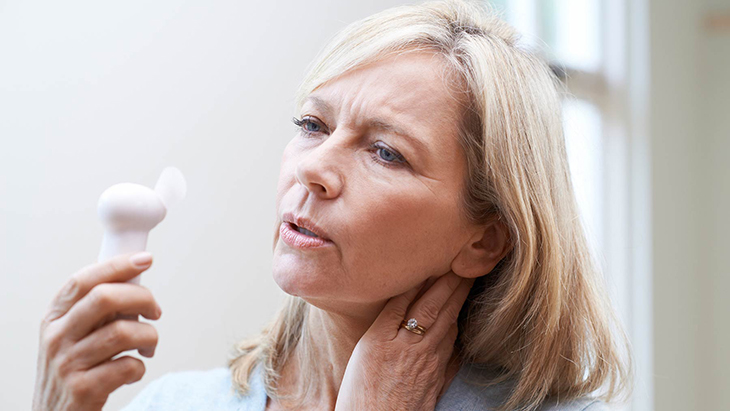Heart Risks After Menopause May Increase For Those Who Suffer Hot Flashes And Migraine Attacks

Decreasing levels of estrogen, a hormone in the body, can heighten the likelihood of experiencing migraines and hot flashes. Recent research indicates that many women with short-term menopausal symptoms might not face increased cardiovascular risks.
Two separate studies suggest that middle-aged women who suffer from either migraines or hot flashes may not necessarily be at higher risk of heart problems, unless these symptoms persist over several years.
One of these studies delved into data from over 1,900 women, beginning when most of them were in their twenties. It discovered that the combination of experiencing migraine attacks in early adulthood and enduring persistent hot flashes or night sweats during menopause correlated with a 51 percent higher risk of heart attack and a 70 percent greater risk of stroke. However, it’s worth noting that only around 7 percent of women in the study had both a history of migraines and ongoing hot flashes. These findings were detailed in the journal Menopause.
“Women with migraines only or hot flashes that weren’t prolonged and severe were not at particularly increased risk,” said Catherine Kim, MD, MPH, the lead study author and an associate professor of medicine, obstetrics and gynecology, and epidemiology at the University of Michigan in Ann Arbor.
“We found that only women with severe prolonged hot flashes preceding or beginning at around age 40, as well as migraine, had greater cardiovascular risk,” Dr. Kim shared.
In the subsequent investigation, scientists directed their attention towards identifying the primary determinants during early adulthood that could significantly influence the likelihood of enduring hot flashes and night sweats throughout menopause. According to findings from this study, which were also documented in the publication Menopause, women who suffered from migraines exhibited a 69 percent increased probability of encountering persistent menopausal symptoms in their later years. This underscores the potential link between migraine history and heightened susceptibility to enduring discomfort during the menopausal transition.
The Vasomotor Symptoms that Come with Menopause
Vasomotor symptoms of menopause, such as hot flashes and night sweats, stem from alterations in blood vessel functioning. Similarly, migraine headaches are linked to fluctuations in blood vessel dilation and constriction.
Menopause, typically occurring in women in their forties or fifties, marks the cessation of menstruation. This transition is characterized by decreased levels of estrogen and progesterone, both before and after menopause, which can manifest in various symptoms. These symptoms encompass mood swings, joint discomfort, vaginal dryness, insomnia, cognitive issues, and the hallmark vasomotor symptoms of hot flashes and night sweats.
How Estrogen Levels Affect the Risk for Migraine Attacks
Migraines are frequently linked to fluctuations in estrogen levels within the body. Susan Davis, MBBS, PhD, a professor and director of women’s health research at Monash University in Clayton, Australia, explains that this association explains why certain women experience migraine episodes either during menstruation or following ovulation. These periods coincide with points in the menstrual cycle when estrogen levels decrease.
“So it is no surprise that migraines and vasomotor symptoms are associated,” Dr. Davis said. She wasn’t part of either of the new studies made.
Both recent studies have a common limitation: they did not intend to establish a direct causal relationship between conditions like migraines or persistent hot flashes and cardiovascular events such as heart attacks or strokes. Additionally, these studies did not investigate the potential impact of treating migraine or vasomotor symptoms on the overall cardiovascular risk in aging women.
However, despite these limitations, Kim recommends that all women, regardless of whether they experience migraines or not, prioritize actions within their control during early adulthood to potentially mitigate the risk of developing heart disease, experiencing heart attacks, or suffering strokes later in life. By focusing on proactive measures, such as maintaining a healthy lifestyle and managing risk factors, women can aim to safeguard their cardiovascular health as they age.
“Even if their cardiovascular risk factors are unremarkable at this age, they may be at greater future risk for heart disease, and they should pay attention to optimizing weight, blood pressure, glucose, cholesterol, and most importantly, cigarette use,” Kim said.



